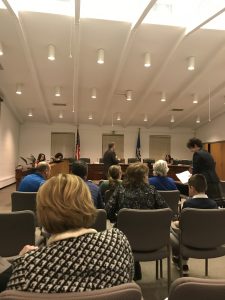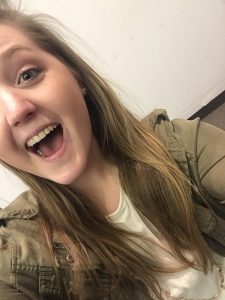On Wednesday, February 21, 2018 the monthly Board of Education meeting was held in the Town of Granby. This televised, public meeting was attended by roughly 15 town members.
The BOE members conclude routine announcements and introduce a presentation conducted by two science teachers in the Granby Public School System, Sue Alender and Ann Buckley on the Next Generation Science Standards (NGSS). Alongside the qualified teachers, stood four Granby students (sixth and seventh graders) Alyssa Bordonaro, Luke Ranicar, Isabel Gravlin, and Ezra Holt. The presentation can be viewed under the sub category “I.D. Schools in the Spotlight” located on the Granby BOE website.
The presenters state that science principles and curriculum are drastically changing. Science is understood as content matter that students must learn. However, the new educational approach to science curriculum is taking a very unique approach that differs from the old methods of textbooks, homework packets, and lectures.
“What are my students figuring out today?” -Sue Alender
The Granby Public School System is embracing this question. “What are my students figuring out today?” It appears that educators are looking to embrace the ambiguity in learning. This drastic new approach looks to “cross-cut concepts” and link everything to get a bigger picture through the use of new practices in the classroom (Alender).
These new practices definitely embrace the ambiguity in the learning process. The class begins with a short video clip of a science phenomena. Students are asked to take notes on the video clip in their journals. After the video clip, students are then allowed to ask questions regarding the content they just viewed. Through this broad, multiple-answer approach, students are able to process the science content at their own personal understanding. Throughout the class, the teacher encourages students to write down pivotal information in their journals. These journals serve the purpose as reference material for students when it comes time for tests, quizzes, or state exams. The information as they learned and processed it, is at their fingertips. Overall, the new approach for teaching science content is “[for students to] connect the little details based on their own learning ability to lead to the bigger picture which is what we’re aiming for” (Alender).
This new approach allows students to learn the material in different ways through the overall importance of ambiguity. However, the age-old question for new education policies is whether the method is generally applicable for all students and if there are resources to intervene if students do not respond well to the new method of learning. BOE member Jenny Emory raises the issue that some students may not respond well to ambiguity in learning. Are there strategies to intervene if students cannot succeed with this new approach to teaching science concepts?
Although new teaching approaches can intimidate students, parents, and educators it is clear that NGSS instills hard working, self-sufficient learning practices in students. Alender, Buckley, and the four Granby students avidly support the new-founded level of engagement in this science teaching approach. These teachers have seen an increase for the level of engagement for both the individual student and the classroom as a whole. With more students engaged in the classroom, the teachers are able to intervene with students who are not as active in the learning process.
Overall, it appears that the Granby Public School System is headed in the right direction. Embracing ambiguity in learning, allowing students to discover and problem-solve, and challenging students to provide justifications for their personal understandings will create a strong learning environment.
Learn more about NGSS:

